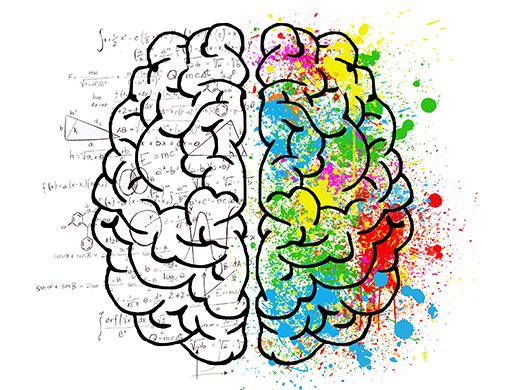2 Where does creativity come from?
While it is important to understand what creativity is, it is just as critical to consider where creativity comes from. Your perceptions of where creativity comes from can have significant impacts on your personal beliefs about your own creativity and how it can be enhanced.
One of the most persistent myths of creativity insists that the left brain is fine-tuned for logic, structure and rationality, while the right brain delivers creativity’s magic. The narrative has roots in research conducted in the 1960s, which helped the neuroscientist Roger W. Sperry to become joint winner of the 1981 Nobel Prize in Medicine.
The ‘left brain/right brain’ split may be helpful in simplifying some rather complex messages about brain functioning, but more recent neuroscientific research suggests that it does not stand up to scrutiny. Different stages in the creative process – analysing a problem, coming up with potential solutions, refining those solutions – use different neural networks and so draw upon different aspects of the brain.

So where does creativity come from in the brain? In recent years, neuroscientists have been particularly successful at isolating certain elements of human behaviour and characteristics to specific parts of the brain. It is known, for example, that the Hippocampus is associated with memory and that the Dorsal Attention / Visuospatial Network is involved in viewing the outside world.
The problem is that the human brain is the most complex single entity in the known universe. To reduce aspects of human functioning to just one discrete element of the brain is both needlessly dismissive, but also incorrect.
Consequently, some of the key myths of popular psychology such as left brain vs right brain are basically incorrect (Yoruk and Runco, 2014). As psychologist Scott Barry Kaufman explains:
Creativity does not involve a single brain region or single side of the brain.
Instead, the entire creative process – from preparation to incubation to illumination to verification – consists of many interacting cognitive processes (both conscious and unconscious) and emotions. Depending on the stage of the creative process, and what you’re actually attempting to create, different brain regions are recruited to handle the task.
Importantly, many of these brain regions work as a team to get the job done, and many recruit structures from both the left and right side of the brain.
This final assertion that creativity recruits structures from the left and right side of the brain builds upon recent work which has tended to highlight the functioning of networks in the brain and their interactions (Bressler and Mennon, 2010, p. 277).
Ultimately, creativity requires a whole brain approach and instead of asserting that it originates in one part of the brain people need to give themselves more credit and recognise the more diverse nature of creativity in practice!
